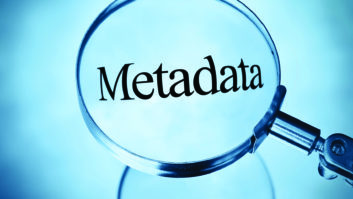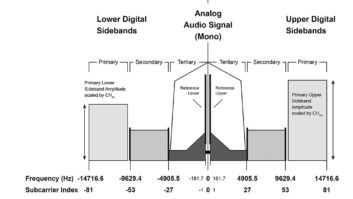Another step for IBOC
Apr 1, 2007 12:00 PM, Chriss Scherer
[email protected]
In an open agenda meeting on March 22, the FCC voted to accept the Second Report and Order, First Order on Reconsideration, and Second Further Notice of Proposed Rulemaking that are all part of the MM Docket No. 99-325, which are included in the Digital Audio Broadcasting Systems and Their Impact on the Terrestrial Radio Broadcast Service proceeding. (That’s a mouthful.) This is the latest event in the ongoing proceedings relating to the IBOC digital radio transmission system, better known as HD Radio.
The issue had been delayed for a vote for several months, and opponents and proponents alike were eagerly anticipating the outcome, which can easily be called a victory for the HD Radio proponents. The most significant change is that AM stations are now authorized to transmit HD Radio signals at night. The cheers for and the jeers against this are equally loud.

Allowing digital AM transmissions at night puts the AM roll-out on track with the FM now. While simply allowing nighttime use doesn’t correct the known challenges that exist, it will allow an easier means to evaluate the situation and perhaps determine a better solution during the hybrid operating phase.
Other elements of the ruling don’t provide such sweeping changes in the system, but rather streamline some processes. For example, FM stations can now multicast without obtaining prior FCC authority, FM stations are permitted to use separate analog and digital antennas without applying for special temporary authority, and FM stations are allowed to operate in the extended hybrid mode. The ruling also allows IBOC transmissions on FM translators, FM boosters and LPFM stations.
Other aspects of the ruling answer some long-standing questions. For instance, multicast streams must observe the same EAS, station ID, sponsor ID and political broadcasting rules as the main channel streams.
There were several points that were not addressed in the ruling, and many of them were the subjects of commissioner’s comments during the meeting. With localism, and diversity of voices and public interest being such an omnipresent effort by the commission, many broadcasters anticipated specific rules to mandate stations to provide community-interest programming on the multicast streams.
Commissioners Adelstein and Copps referred to this in their dissenting-in-part comments. Commissioner Copps even posed a question in his comments: If a station can multicast, does a licensee really need to own eight stations in a market? Commissioners Taylor-Tate and McDowell and Chairman Martin believe that licensees will do the right thing and use the additional streams to provide public interest programming on their own without being forced to do so.
There is also no mention of digital recording and redistribution of an IBOC stream. While this was mentioned, it was not included in the ruling because this issue is already being heavily debated in other arenas. There is also no specific timeline for stations to commence IBOC transmissions or to cease analog transmissions. This is being left to the market to decide.
The ruling also defers a decision on digital radio standards already approved by the National Radio Systems Committee until a later date.
So what does all this mean? In short, it means that HD Radio has taken another step forward to becoming the system for the United States. It’s still not the singular standard � and I doubt that the commission will ever take that definitive step unless every station transmits an HD Radio signal � but it is the FCC-preferred system.
The commission stopped short of answering some heavy questions about digital radio service, but the heavy questions don’t have easy answers. By deferring these questions for now and further authorizing IBOC, the commission has brought a ubiquitous digital radio standard a little closer to being a reality.












